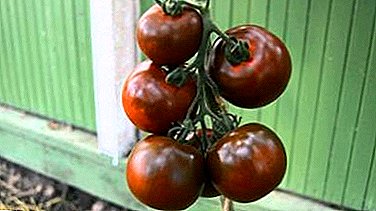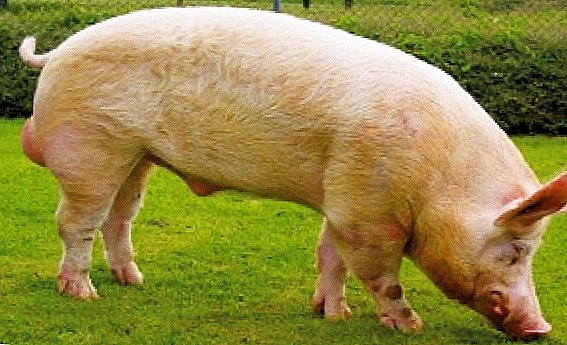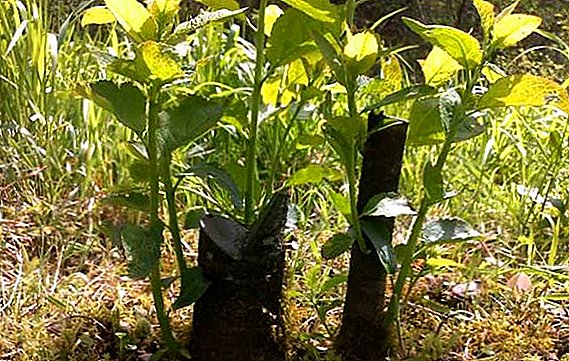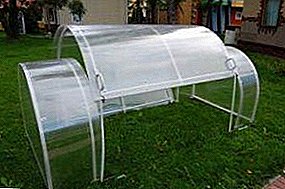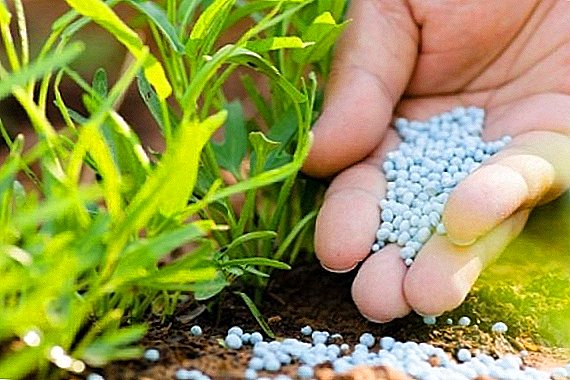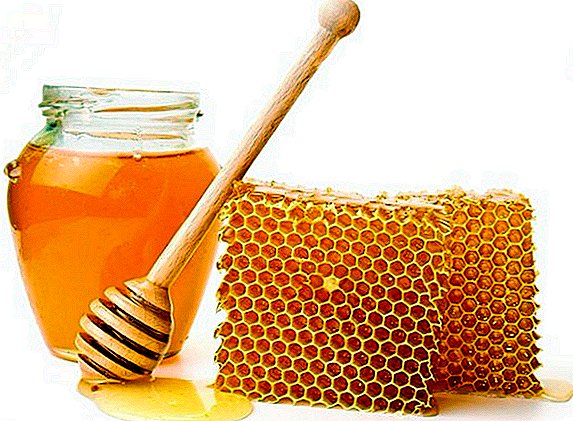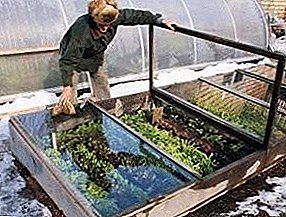
There are many ideas to create a winter greenhouse. These structures do not have any strict classification. They can be made of glass, film, polycarbonate with a wooden or iron frame.
Heating methods for greenhouses are different. It is possible to heat the construction with water heating, electricity, biofuel, a conventional stove.
Variants of winter facilities
 Greenhouses can be deepened into the soil or erected on the soil surface. Architectural solutions are the most popular arched, dual-slope, single-slope. In addition, the structure can be not only freestanding, but also a wall or built on the top floor.
Greenhouses can be deepened into the soil or erected on the soil surface. Architectural solutions are the most popular arched, dual-slope, single-slope. In addition, the structure can be not only freestanding, but also a wall or built on the top floor.
The type of construction of the greenhouse, size, methods of heating should be chosen on the basis of what plants will be grown. Now some gardeners are keen on growing citrus and other exotic crops.
But the greenhouse, intended for the cultivation of vegetables or the cultivation of mushrooms, will not be adapted for exotic fruits. Therefore, starting to create a greenhouse, you need to take into account the factors affecting its functionality.
Determine the size and choose a place
The standard dimensions of a greenhouse designed for meeting family needs are -3 m wide, -6 m long, and 2.5 m high. If a greenhouse is being built for a business, then its area should be from 60 to 100 m2.
It is necessary to establish a design on the lit site.
Choosing heating
 For greenhouses with a small area of up to 20 m2, gardeners use conventional stoves or create heating for the structure using biofuels. Although the latter option is suitable for large buildings.
For greenhouses with a small area of up to 20 m2, gardeners use conventional stoves or create heating for the structure using biofuels. Although the latter option is suitable for large buildings.
As biofuels, you can use manure, straw, sawdust and other organic matter. Heating a greenhouse with biofuels is economical and beneficial. Organic matter is laid under the soil layer and heats and feeds plants with minerals. Biofuel provides heating the greenhouse to an air temperature of 20 to 30 degrees.
Greenhouse stove: buy or do it yourself
Heating a greenhouse of small size is convenient with a conventional stove, which you can make yourself or buy in a store. For heating a greenhouse using solid fuel or waste oil. It is advantageous to heat the greenhouses with sawdust. This allows you to save on fuel.
The furnace for sawdust has the simplest design. To create such a unit, you need two barrels with a volume of 200 liters, a pipe section (150 mm) for the chimney and fittings for the manufacture of legs. The process of manufacturing a furnace for a greenhouse consists of several stages:
- In the first barrel we make a hole for the chimney and weld the pipe.
- In the bottom of the barrel in the center is cut a hole with a radius of 100 mm.
- From the second barrel we make the firebox. From the bottom we mark 250 mm and at this point we cut the barrel.
- Weld the legs to the firebox, cut a hole through which the wood will be laid, install the door.
- The furnace is connected with the first barrel and welded. Making the cover.
Now the stove is completely ready. If it is not possible to make a furnace on your own, you can order the manufacture of such a simple design to local craftsmen.
Greenhouse materials
 Polycarbonate greenhouses have become in great demand recently. Polycarbonate is a durable material, well transmitting the sun's rays.
Polycarbonate greenhouses have become in great demand recently. Polycarbonate is a durable material, well transmitting the sun's rays.
Sheets of polycarbonate flexible, easily take any form, so polycarbonate greenhouses are often building an arched shape. Polycarbonate retains heat well. In addition, the sheets of this material reflect the infrared rays emitted by plants, which is an additional source of heat.
A more economical option are greenhouse structures covered with plastic wrap. The life of this material, depending on the thickness can be up to 3 years or more. But polycarbonate will last more than 12 years.
The frame is made of wooden bars or metal profile. The wooden parts of the frame should first be treated with special antiseptics to prevent the wood from rotting from high humidity.
We build a winter greenhouse with our own hands
For winter dvuhskatnogo greenhouse, you must make greenhouse frames. They are made from slats with a cross section of 4 cm. The frame height is 1.6 m, and the width is calculated from the width of the film, usually 1.5 m. The film is stretched onto the frames in two layers ("stocking").
In the slats with a cross section of 50 mm, which will be used for the frame, it is necessary to make grooves for the frames. With a greenhouse width of 3 m, the angle of inclination of the roof will be 20 degrees. The length of the greenhouse facilities - 6m.
Winter stationary greenhouse is installed on the foundation. It can be monolithic, block or tape.
The shallow foundation of the foundation is as follows:

- A trench is dug 40 cm deep and 40 cm wide along the perimeter of the future structure.
- We fall asleep with sand and make formwork 20 cm high above the ground. At this height we will raise the foundation.
- Lay the reinforcement and fill with the solution. For mortar we take the following components: cement, sand, crushed stone in the ratio of 1x3x6.
- Foundation solidification time is 25 days.
- When the foundation hardens, you can mount the frame of wooden bars and install the frame.
Four pillars are fixed to the foundation with anchor bolts and rails are mounted.
The frames are installed in the grooves and fastened to the frame with nails. The gaps between the frames are covered with wooden planks.
Racks for the frame are made of bars with a section of 15x15 cm, bars are suitable for rails with a section of 50 cm. The bars of the walls are connected between the rafters with a section of 12 cm.
Greenhouse with plastic film economical and efficient building for growing various crops. In it you can make racks or equip beds. To further reduce construction costs, biofuels can be used to heat such a greenhouse. In this case, there is no need to create a heating system in the greenhouse.


